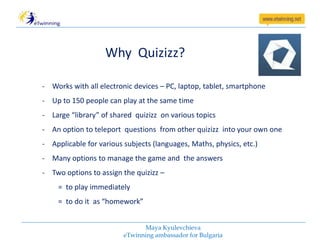Ever wondered how you can create a minimalistic blog theme using React and WordPress? Have you been searching for a guide that could walk you through the step-by-step process? Are you interested in modern, streamlined designs for your blogging platform?
There is a growing need for minimalistic blog themes, as indicated by several authoritative sources including Forbes and Web Designer Magazine. They suggest that the cleaner and more focused a blog interface, the better the user engagement. Complex designs and overabundant functionalities often overwhelm readers, detracting from the actual content. The React JS library, when combined with WordPress, provides a solution to this problem, according to Smashing Magazine. By taking advantage of React’s simplicity and WordPress’s flexibility, we can create striking yet uncomplicated blogging themes.
In this article, you will learn how to craft an aesthetically pleasing and functionally intuitive minimalistic blog theme. We will take you through each stage of the process, ensuring a clear understanding of both React and WordPress’s roles in the development. From setting up the necessary development environment to drafting and refining the theme, we cover it all.
Furthermore, we explore how to make the resulting blog theme fully responsive, adapting smoothly to various screen sizes. Lastly, you will find out how to test, launch, and troubleshoot your new theme. You can look forward to gaining valuable insights and practical knowledge along this journey.

Definitions and Understanding of a Minimalistic Blog Theme with React and WordPress
A minimalist blog theme would be a simple yet appealing design to present blog content, designed with a focus on the essentials and reduced clutter.
React, is a popular JavaScript library used in web development to build interactive elements on websites.
WordPress is a content management system, used widely for creating blogs and other types of web pages. It allows people with little or no coding knowledge to create their own websites.
In context, Creating a Minimalistic Blog Theme with React and WordPress would mean developing a straightforward, clean-looking blog page using React and WordPress.
Unleashing the Power of Minimalism: WordPress and React in Perfect Harmony for Blog Themes
Why Choose React and WordPress for Your Minimalistic Blog Theme?
React and WordPress are two of the most widely used tools in the world of web development that offer flexibility and vast functionalities. React, a robust JavaScript library designed for building user interfaces, is known for its simplicity and performance. It enables developers to craft large web apps that can change data without reloading the page, making it incredibly efficient for dynamic user experiences.
On the other hand, WordPress powers more than 40% of all websites on the internet, making it the go-to content management system (CMS). WordPress offers a rich ecosystem of plugins and themes, making it a prime choice for designing custom-made blogs. Combining React and WordPress allows developers to design minimalistic blog themes that are efficient, immersive, and tailored to specific needs.
Creating Your Minimalistic Blog Theme
Designing a minimalistic blog theme with React and WordPress requires some technical expertise, a good understanding of both tools, and a clear vision of what you want your blog to look like. The first step begins with setting up the WordPress backend. WordPress supports Rest API, which allows you to push and pull data from the CMS into your React Application.
- Install WordPress and configure the desired settings.
- Create a new react application using create-react-app.
- Install the WordPress Rest API Plugin to gain access to the API endpoints.
- Use Axios or Fetch to access these API endpoints and display your blog content in your React app.
Once the necessary connections between the WordPress and React app are generated, the next step is to design the layout of your blog. Using React’s component-based architecture, you can create reusable components for different parts of your blog such as header, footer, post list, and post content.
The beauty of creating a minimalistic theme is that it focuses on content and layout clarity. Keep the design clean and clutter-free, use a clear and easy-to-read typeface, and stick to a simple but impactful color palette.
By combining WordPress’s power and flexibility with React’s developer-friendly interface and high efficiency, developers can tap into their creativity and design impressive, immersive and minimalistic blog themes.
Improve Your Blog’s User Experience: Revolutionizing Themes with React and WordPress
Questioning Traditional Theme Creation
Have we been limiting ourselves by sticking to traditional methods of creating themes for our blogs? In a world where technology advances at the speed of light, it might be prudent to push the boundaries of what is considered the norm and explore new, revolutionary methods. React, a JavaScript library and WordPress, a popular content management system, when used together, can create a minimalistic blog theme that stands out. React provides the flexibility and reusability of components, while WordPress offers a user-friendly platform with numerous plugins, making it easier to manage and update your blog. Using their combined capabilities opens up a plethora of possibilities to create interactive and dynamic themes.
Addressing The Technical Tangle
When it comes to incorporating React into WordPress, the initial hurdle is often rooted in the complexity of combining two different environments and ecosystems. Setting up the environment for React can be an overwhelming task, especially if one is not familiar with command-line interfaces, node modules, or webpack bundling. Similarly, implementing React into WordPress isn’t intuitive and requires a comprehensive understanding of both platforms. Furthermore, owing to these complexities, documentation and resources available online are ambiguous, making it challenging for users to troubleshoot problems or improve their skills.
A Triumph of Innovation
Despite these challenges, developers worldwide have managed to blend the strengths of WordPress and React to create minimalistic and interactive blog themes. For example, Gatsby, a React-based framework, helps in generating static site content using WordPress as a headless CMS, which is compromised solely of a back-end content repository that makes content available via a RESTful API. This results in fast, responsive, and visually pleasing blogs. Moreover, companies like Airbnb, Netflix, and Facebook, have adopted the practice of using WordPress and React together, illustrating its practical and real-world applications. These successful implementations pave the way for more to come and inspire others to challenge the conventional limitations of blog theme creation.
The Fusion of Function and Aesthetic: Building Minimalistic Blog Themes with WordPress and React
How Can We Master Aesthetic Simplicity with Technological Complexity?
It’s a question many designers and developers grapple with: how do you balance the pursuit for simplicity in aesthetics with the demands of complex technology solutions? Ultimately, the answer may lie in the emerging technology of ReactJS and the tried-and-true platform of WordPress. ReactJS, known as a flexible and efficient JavaScript framework, allows developers the opportunity to create beautiful, responsive user interfaces for web applications. On the other hand, WordPress, with its vast ecosystem of themes and plugins, allows for an unparalleled level of customization. Merging these two technologies results in a pristine and minimalistic blog theme that provides both a seamless user experience and exquisite aesthetics. By integrating ReactJS with WordPress, developers, designers, and content creators have the power to redefine blog theme aesthetics, all while maintaining a high degree of functional complexity.
Navigating Common Challenges in Thematic Design and Development
The bridge between the philosophy of minimalism and the feasibility of technology often presents its share of challenges. This strife often centers around understanding how to effectively utilize feature-rich technologies like ReactJS and WordPress to design and develop a streamlined, minimalistic blog theme. Incorporating an abundance of tools and components can often result in an overwhelming and complicated layout, rather than achieving the desired simplicity. Adding to that, not all themes in WordPress are compatible with React, which can lead to an array of compatibility problems, causing glitches, layout issues, or slower load times. Navigating these common challenges requires a deep comprehension of both ReactJS and WordPress, as well as detailed planning to ensure the right balance between aesthetic goals and technological necessities.
Applying Best Practices to Craft a Pristine, Minimalistic Blog Theme
To effectively mesh ReactJS and WordPress for a minimalistic blog theme, it’s necessary to draw from real-world application examples and best practices. Firstly, the usage of ReactJS’ component-based architecture is an essential approach that allows for the creation of reusable, self-contained pieces of user interface. By breaking down the different parts of a blog theme into individual React components, developers can maintain a clean and organized codebase, promoting efficiency and scalability. As for WordPress, starting with a bare-bones theme is often the best route, since it allows developers to build a custom theme from the ground up with minimum clutter. Furthermore, leveraging WordPress’ REST API can ensure seamless integration between React and WordPress, further bridging the gap between the two technologies. Finally, repeated testing during and after development is a crucial practice to ensure all components and elements are working perfectly together, providing an optimal user experience while maintaining the pristine, minimalistic aesthetic.
Conclusion
Have you truly experienced the liberating capacity of combining React with WordPress to develop that exclusivist, minimalistic blog theme you’ve always visualized? It harnesses the power of not only efficient design but also enhanced user experience. By leveraging React’s dynamic capabilities and WordPress’s impressive flexibility, you’re at liberty to reimagine, recreate and redefine your blog’s aesthetics, without surrendering functionality. This approach brings not just a sense of sophistication, but also an edge of innovation that significantly sets your blog apart.
It’s appreciated that you’re walking this development journey with us and it’s an honor to guide you through the nitty-gritty on a regular basis. Your continuous support encourages us to venture deeper, exploring proactive solutions while sharing more insightful knowledge. We invite you to stay tuned and maintain this insightful interaction. In the name of staying informed, expect exciting new topics and releases that will be popping up pertaining to contemporary React and WordPress use, we promise they will be worth the anticipation.
Lastly, in these rapidly digitizing times, it’s an absolute necessity that you keep yourself updated with the latest trends and advances. This could highly help you to retain your blog’s relevance in the digital space. It’s not only about catching expressive designs but also about ensuring the scripts are turning faster and user interaction is being optimized. Let this not merely be a wait for new releases but also an invitation for you to delve further and discover what else is possible with React and WordPress. The future holds unlimited potential, and with the right tools and knowledge, you can make your mark in it. Remember, it all begins with a simple, minimalistic theme.
F.A.Q.
A Minimalistic Blog Theme is a simplified, clutter-free design that focuses on content rather than overwhelming features or visuals. It incorporates plenty of whitespaces, simple navigation, and limited color palettes.
React is a popular JavaScript library for creating user interfaces, it provides better efficiency and flexibility. It allows you to design reusable UI components, distinctively improving the speed and simplicity of the development process.
WordPress can serve as a backend for your blog, where you can manage your content. Through WordPress’ Rest API, you can retrieve this content into your React blog theme, ensuring seamless content management.
A Minimalistic Blog Theme offers a distraction-free environment for your readers, ensuring your content truly stands out. Additionally, its simplified design promotes better loading speed and overall improved performance, delivering a superior user experience.
Yes, you should have a basic understanding of both React and WordPress. Furthermore, you should also understand JavaScript, HTML, and CSS adequately to fully leverage the advantages of these platforms.

